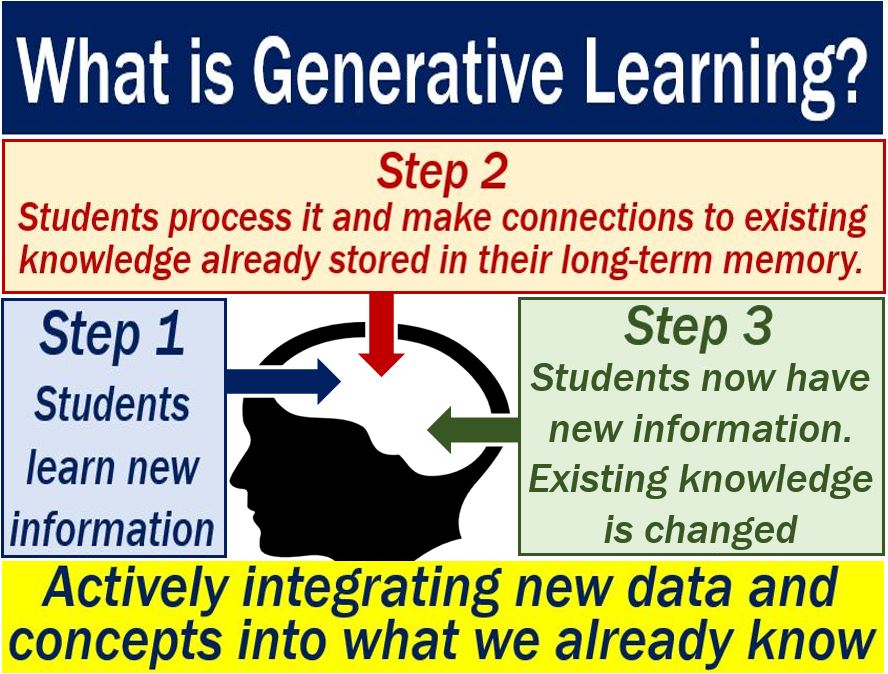The way exposed to achieve better learning.
The method of generative learning and its key concepts
Generative learning is a learning theory that involves actively integrating new ideas with what the learner already knows. In other words, incorporating existing knowledge with new information based on open-mindedness and experimentation. For learners to understand what they learn, they have to construct meaning actively.
Put simply; generative learning is a style of learning in which the learning links old and new ideas. The aim is to gain a better understanding of the new data or concepts.
It is a type of instruction that constructivists developed. In fact, generative learning is the parent of several current academic motivation theories.
Merlin C. Wittrock (1931-2007), an American educational psychologist, introduced the theory in 1974.
Wittrock said that it was possible for learners to actively integrate new ideas into their memory to enhance their learning experience.
According to The Law Dictionary, generative learning is:
“A new way of viewing old methods drives this style of learning. It encourages individual and team creativity. To flow with market, technology and society changes, organizations depend on the generative learning style.”

Generative learning and memory
The theory suggests that when learning new things, we use memories that already exist in our brains. When we add new data to our long-term memory, that data becomes a part of the things we know.
In other words, it becomes part of our knowledge base if we integrate it within our long-term memory.
The theory assumes that our brains do no simply observe passively in our environment. Neither do our brains observe the events they experience passively.
In fact, they construct their own perceptions about experiences, scenarios, and problems.
Generative learning – four key concepts
In an article on elearningindustry.com, Christopher Pappas explains that Generative Learning Theory comprises four key concepts: recall, integration, organization, and elaboration.
Teachers and creators of teaching materials can involve one, two, or more of those concepts. Learners’ needs determine which concepts to use as well as which learning materials are available.
Integration
Learners could integrate new concepts or data with concepts or information they had already gathered or stored.
By integrating the new data, learners have altered it into a form. They can subsequently remember and access the new information more easily.
Learners could, for example, learn a new concept by creating analogies. They could also paraphrase the content.
Recall
When we access information that we have stored in our long-term memory we ‘recall.’
Learners could, for example, repeat new information several times until they understand it fully. They could also do the same with new concepts.
Elaboration
Elaboration means adding new concepts to knowledge that we had already stored by analyzing them.
For example, we could create mental images. How could you learn and remember the meaning of BREXIT? You could create an image of somebody wearing the Union Jack exiting a room through a door.
Organization
Organization refers to linking data or concepts we had already gathered to new information or concepts in an effective way.
For example, we could analyze the main points of a particular concept. Additionally, we could create lists.




